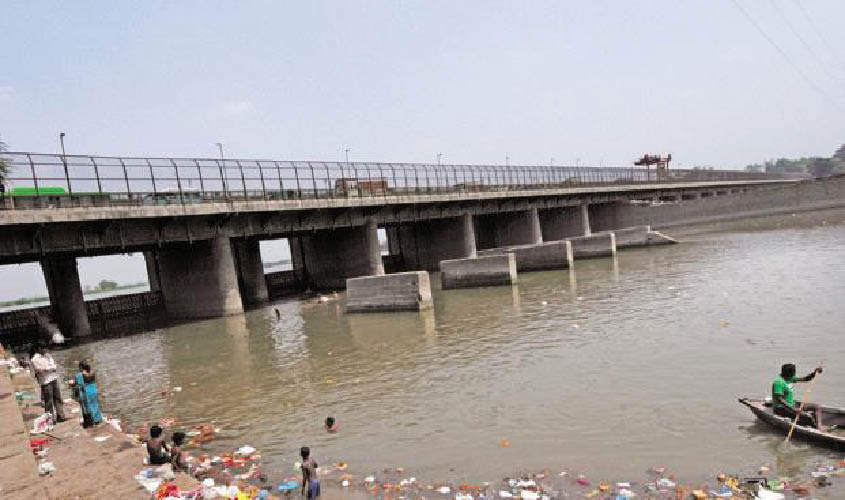Experts say dissolved oxygen levels in the river have been ‘nil’ in Delhi since 2015.
New Delhi: River Yamuna, which is the source of 70% of Delhi’s drinking water, is dead, due to rising pollution levels in the water and the absence of any oxygen level in the river. This, despite the government spending over Rs 6,000 crore to clean the Yamuna in the last two decades.
Analysis of data of the DPCC (Delhi Pollution Control Committee) on the pollution level in the Yamuna shows that the Dissolved Oxygen (DO) levels in the river as soon as it enters Delhi have remained “Nil” since 2015, while the minimum requirement of DO is 4 mg/litre. The DO is the amount of oxygen required for the sustenance of any living organism in the river.
The BOD (Biochemical Oxygen Demand) levels in the Yamuna also remain very high throughout the stretch that the river takes to pass through in the national capital. BOD is the amount of dissolved oxygen needed by micro-organisms to break down organic waste in water.
While the maximum level of BOD that should be present in the river is 3 mg/litre, at most locations—Nizamuddin bridge, Okhla, ITO bridge—the BOD levels are more than 25 mg/litre.
As soon as it crosses the Wazirabad barrage, the DO level in the Yamuna turns “Nil”, which means that no living organisms can be found in the Yamuna after the Surghat-Wazirabad barrage and, according to environmentalists and experts, the Yamuna turns into a “drain” while it flows through Delhi.
Even during monsoon or the post monsoon season, there is little or no improvement in the condition of pollution levels in the Yamuna. As analysed through the last three years’ data of the DPCC, the DO as well as the BOD levels remain below and beyond the permissible limits throughout the year.
Environmentalists and experts have blamed the government for doing nothing to save the Yamuna which has eventually led to its death in the national capital.
Sushmita, Programme Manager at the Centre for Science and Environment, told The Sunday Guardian, “The pollution levels in the Yamuna while it passes through Delhi show that it is no more a river, but a drain. The Yamuna has been dead in Delhi, for all practical reasons. The BOD and DO levels show that no living organisms can flourish in the river, nor is the water even fit for bathing. Even animals cannot bathe in the Yamuna water in Delhi due to the high levels of coliform (a type of bacteria found in faeces and harmful for all living organism).”
Sushmita further said that 50% of the sewage that enters Yamuna is untreated. “There is a huge problem of untreated sewage entering Yamuna. There are 22 major drains in Delhi that were supposed to carry rain water into the Yamuna, but, instead, they carry untreated sewage into the Yamuna. As high as 40% of the sewage treatment plants are not functioning in Delhi, which is why untreated sewage is dumped daily into the Yamuna.”
The National Green Tribunal, as well as the Supreme Court, has also taken cognisance of the matter several times, but even then, nothing seems to have happened in terms of cleaning the Yamuna.
The Ministry of Water Resources, River Development and Ganga Rejuvenation had told the Rajya Sabha earlier this year that the Ministry has already spent Rs 1,514 crore for the development of the Yamuna in the last three years and that at present, a Japanese company, Japan International Cooperation Agency, is implementing phase III of the Yamuna Action Plan (YAP) at an estimated cost of Rs 1,656 crore.
However, the implementation of the projects remains negligible on the ground and there has been little or no activity to restore or conserve the Yamuna.
“The plans have always been in place, but the implementation has been zero on the ground. It is only in paper or else would the Yamuna have died if the projects were implemented. Why have we failed to restore and conserve the river?” Sushmita asked.

